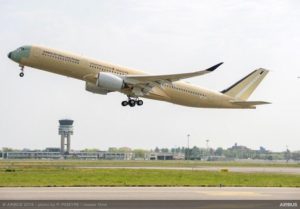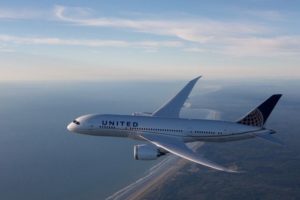Three years ago, Singapore Airlines ordered Airbus’s (NASDAQOTH: EADSY) A350-900ULR, an ultra-long-range version of the aircraft manufacturer’s popular A350 model. The stated goal was to allow Singapore Airlines to resume nonstop flights to the U.S.
Just a few months later, United Continental (NYSE: UAL) beat Singapore Airlines to the punch by announcing a new nonstop route between San Francisco and Singapore. It later added a second route connecting Los Angeles and Singapore. However, with Singapore Airlines’ A350-900ULR fleet set to enter service later this year, United Airlines is likely to see substantial unit revenue erosion on its routes to Singapore.
Singapore Airlines will restart its longest routes
Five years ago, Singapore Airlines canceled its nonstop Singapore-Newark and Singapore-Los Angeles routes. At the time, oil prices had soared past $100 per barrel. The specially configured Airbus A340-500 aircraft that the carrier used for its Newark and Los Angeles flights consumed far too much fuel for the route to be viable with high oil prices.
However, fuel is much cheaper now, despite a recent uptick in oil prices. Furthermore, whereas the A340-500 had four older-technology engines, Airbus’ A350-900ULR is a twin-engine model with state-of-the-art engines.

Singapore Airlines ordered seven A350-900ULRs from Airbus, all of which will be delivered in the second half of 2018. In October, the carrier will use its first A350-900ULRs to restart the Newark-Singapore route. The Singapore-Los Angeles route will return shortly thereafter. Based on the schedule published for the Singapore-Newark flights, there may be enough aircraft time available to operate a third route with the A350-900ULR fleet.
Hitting United Airlines where it hurts
United Airlines doesn’t fly nonstop from the New York area to Singapore, but it probably still has high market share on that route. It can offer one-stop service via its hubs in San Francisco and Los Angeles, or via its Asian joint venture partners’ hubs. Other U.S.-based airlines don’t offer nearly as many options.
Singapore Airlines’ nonstop service will cut several hours off of the journey time between New York and Singapore. That will cut into the demand for United’s one-stop offerings, particularly among business travelers.
This is exactly the market segment that Singapore Airlines is targeting. The carrier will equip its A350-900ULRs with an all-premium configuration of 67 business class seats and 94 premium economy seats. Every seat will have generous legroom, a large TV, and upgraded entertainment options compared to what Singapore Airlines previously offered on its longest routes.
Singapore Airlines’ nonstop flights to Los Angeles — likely to launch near the end of the year — will go head-to-head with United’s flights on the same route. Singapore Airlines’ all-premium configuration is likely to be a winner there, too. After all, Singapore Airlines gets a coveted five-star rating from Skytrax, whereas United holds a mediocre three-star rating.
Considering that both carriers are Star Alliance members, and high-status United loyalists benefit from various reciprocal privileges when traveling on Singapore Airlines, it will be hard for United Airlines to maintain its premium cabin revenue on the Los Angeles-Singapore route.
Will United retrench?
Flying nonstop from San Francisco to Singapore clearly makes sense for United Airlines. The carrier’s San Francisco hub is the best West Coast hub in the U.S. and an ideal gateway for flights to Asia. Singapore Airlines has been competing on that route since October 2016, but United has been able to hold its own.
By contrast, United’s hub in Los Angeles is far smaller. Thus, it doesn’t benefit nearly as much from connecting traffic. Flying to Singapore from Los Angeles might have made sense when United Airlines had the market to itself, but the route probably won’t be viable once Singapore Airlines starts its competing service.

Indeed, in mid-August, United is frequently selling economy tickets for its nonstop Los Angeles-Singapore service for less than $1,000 roundtrip. The fuel bill alone for a flight of that distance is close to $500 per passenger. By mid-September — after the summer peak — tickets are available for a little more than $500 roundtrip (excluding taxes).
Clearly, if these flights are making money, it is based on the strength of demand for business class tickets. Once Singapore Airlines floods the market with business class and premium economy seats, United’s unit revenue for its Los Angeles-Singapore flights is likely to collapse — particularly because Singapore Airlines offers better service.
The good news for United Airlines is that exiting the Los Angeles-Singapore market will likely strengthen its remaining San Francisco-Singapore route. The only question is whether United’s management will bow to the inevitable before the company racks up big losses trying to go head to head with Singapore Airlines in Los Angeles.


